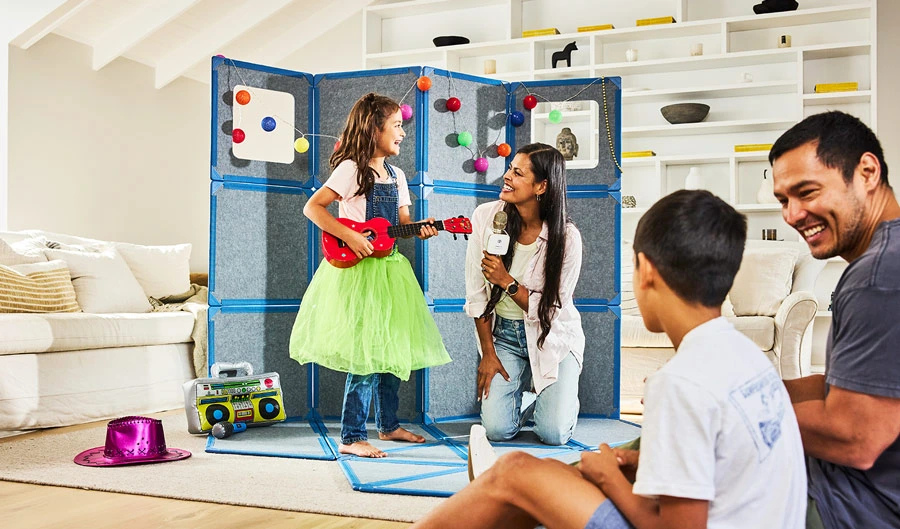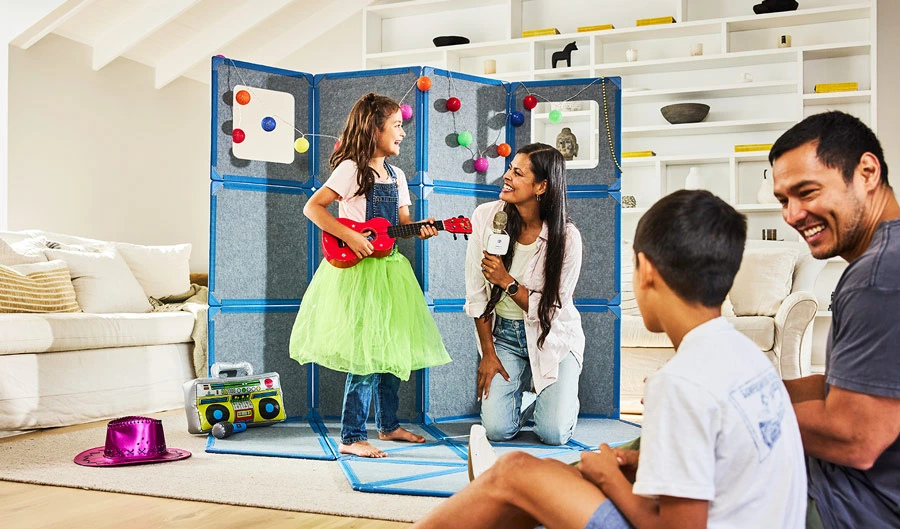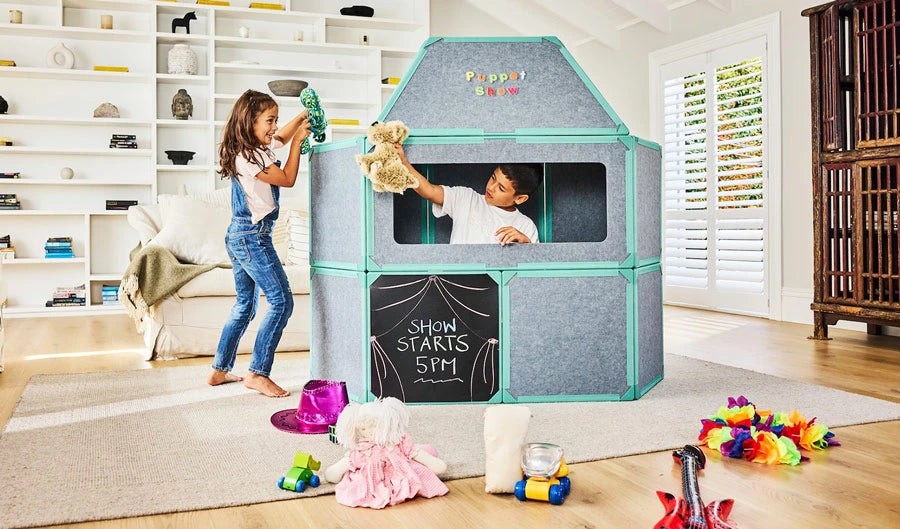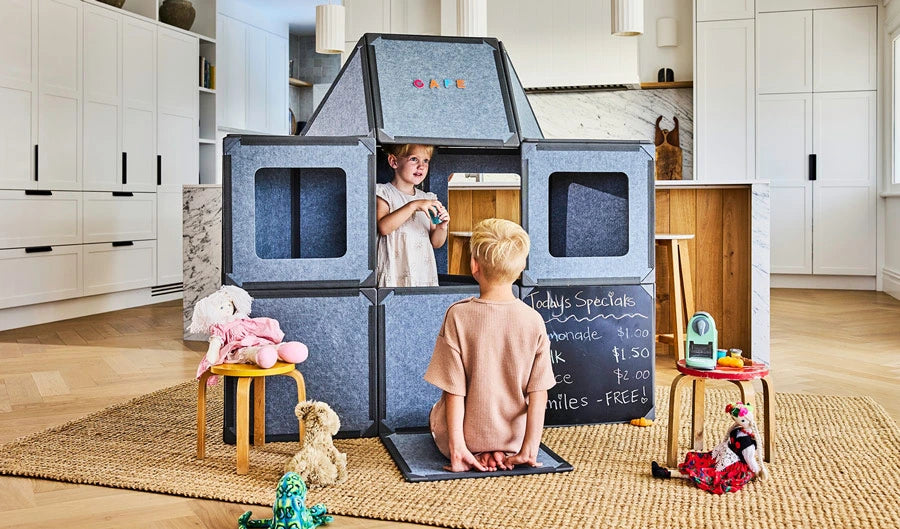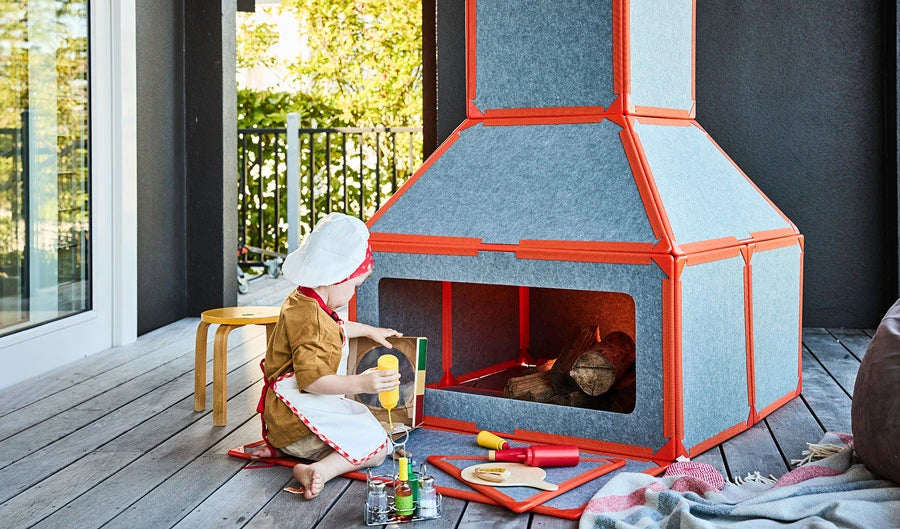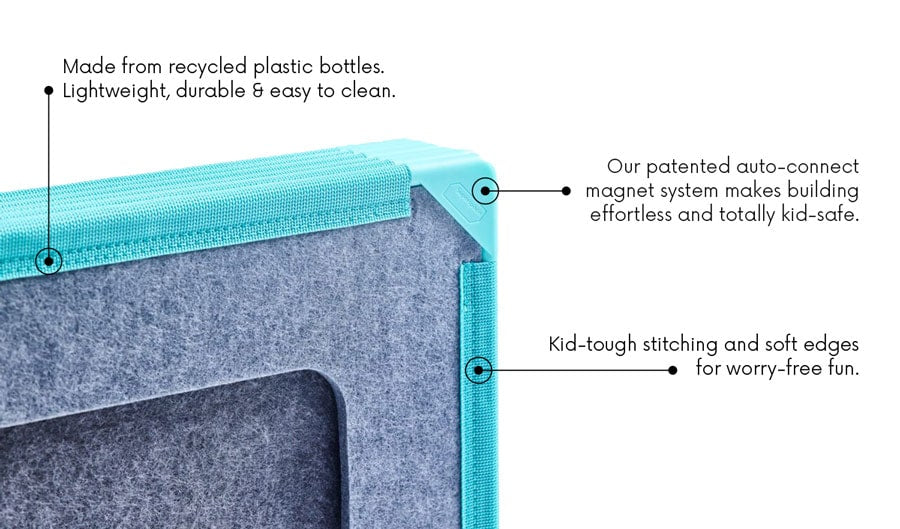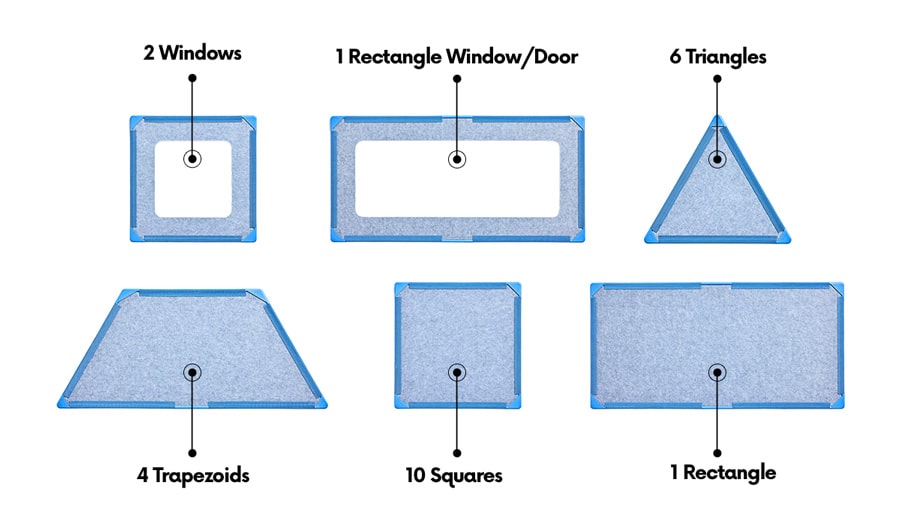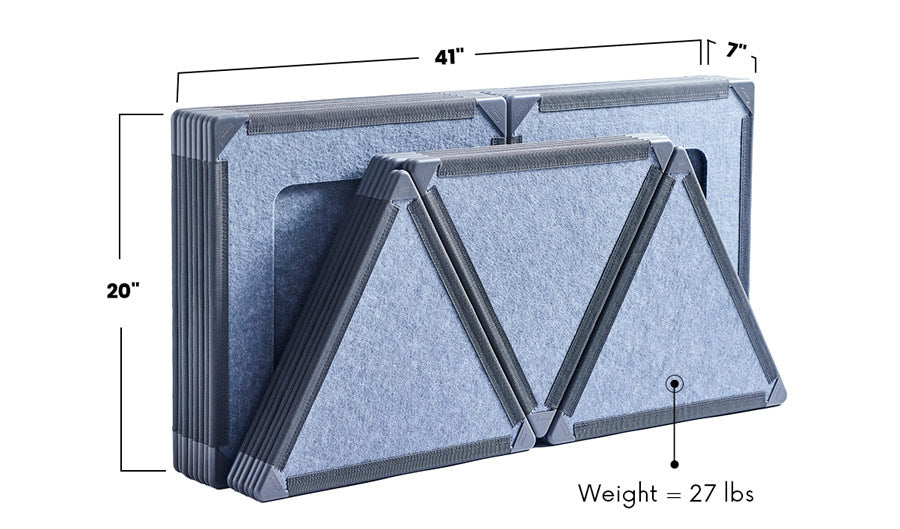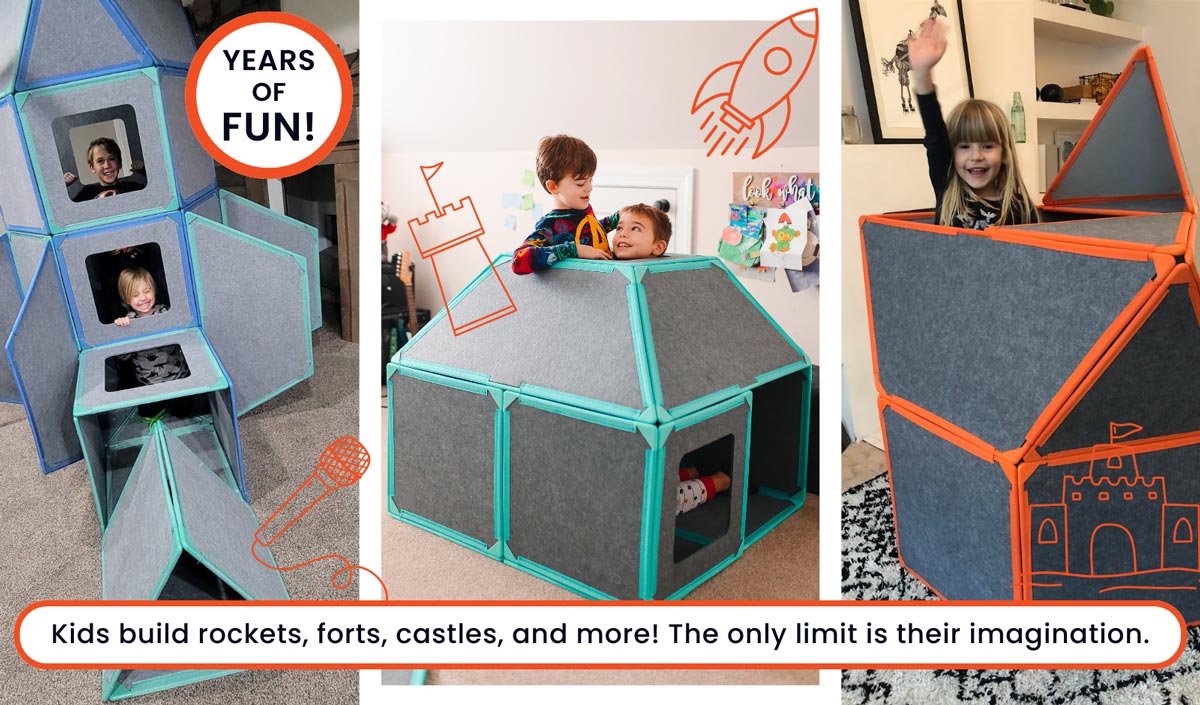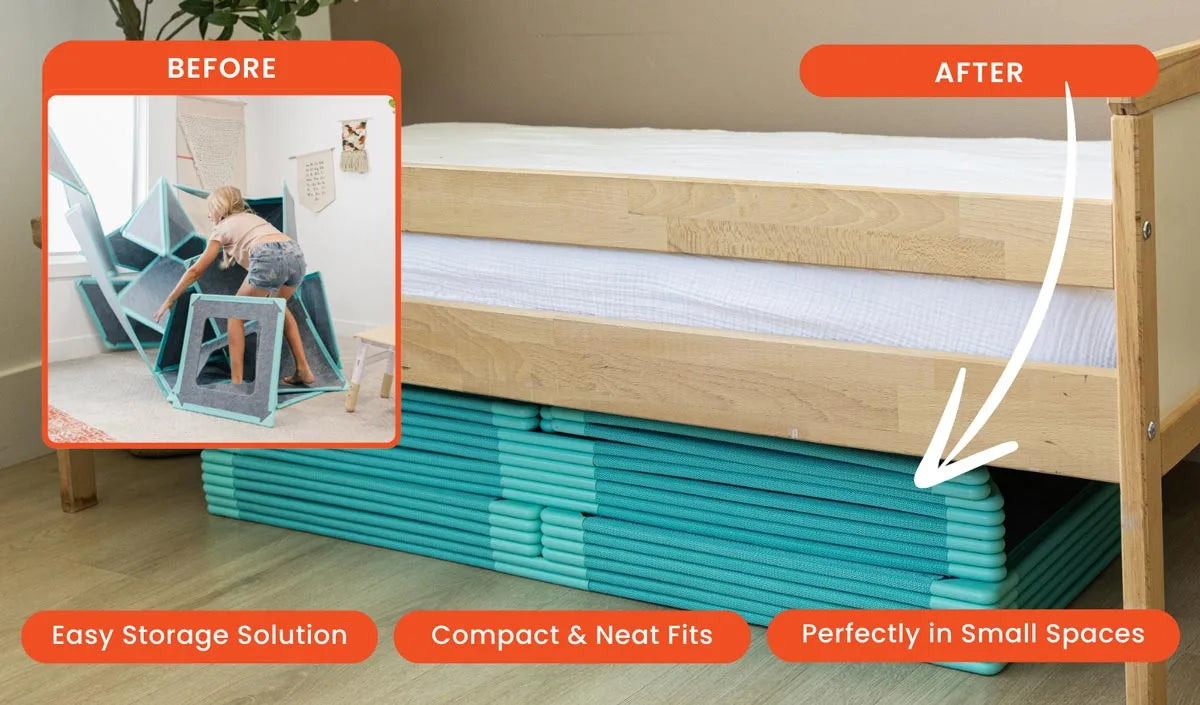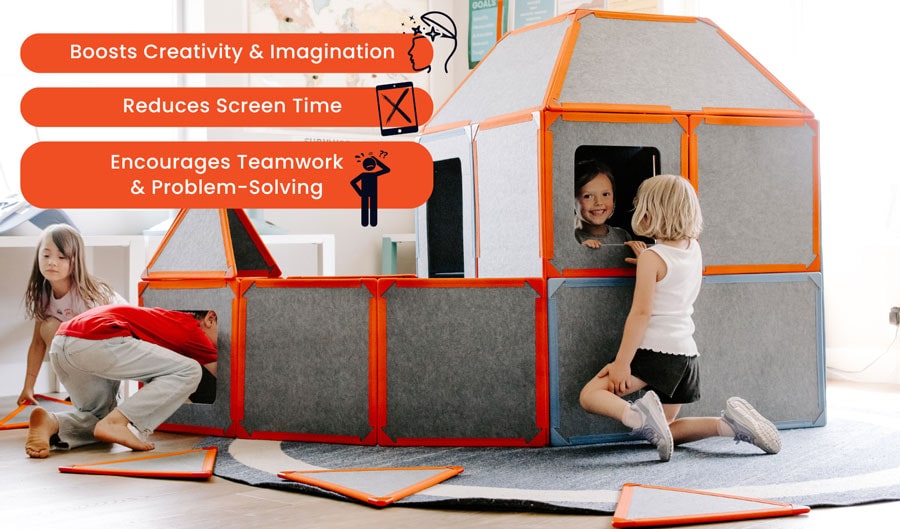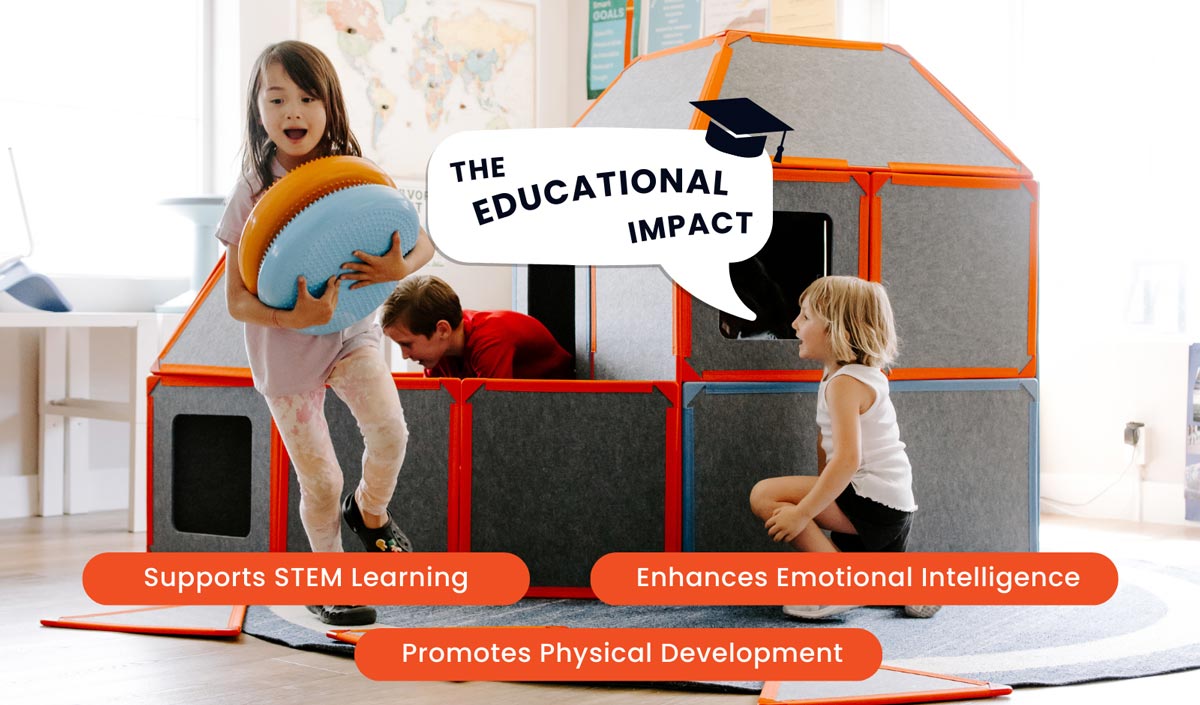The Ultimate Guide to Open-Ended Play: Benefits, Toys, and How to Foster Creativity
Becky WilsonYour child has a room full of toys, yet they still say, “I’m bored.”
Or maybe they spend too much time on screens, and you wish they’d engage in more creative, hands-on play.
Open-ended play is the solution.

Without rules or fixed outcomes, it sparks imagination, problem-solving, and independent thinking.
In this guide, we’ll explore open-ended play benefits, the best toys to encourage it (including Superspace), and simple ways to foster more creative play at home or in the classroom.
Key Takeaways
- Open-ended play sparks creativity, problem-solving, and independent thinking.
- A mix of structured and unstructured play helps develop cognitive and social skills.
- The best open-ended toys encourage exploration, imagination, and collaboration.
- Creating a play-friendly space with rotating materials keeps engagement high.
- Superspace enhances STEM learning, teamwork, and large-scale building projects.
- Parents and educators can support play with storytelling, sensory play, and hands-on challenges.
- Troubleshoot play struggles by introducing prompts, reducing screen time, and rotating activities.
Table of Contents
- What is Open-Ended Play?
- How Open-Ended Play Supports Child Development
- How Open-Ended Play Evolves with Age
- Open-Ended Play vs. Structured Play
- Top 10 Must-Have Open-Ended Toys
- Creating an Open-Ended Play Space
- Choosing the Best Open-Ended Toys
- How Superspace Enhances Open-Ended Play
- Encouraging Open-Ended Play at Home & in the Classroom
- Troubleshooting: When Open-Ended Play Doesn’t Click
- Final Thoughts: Why Open-Ended Play
What is Open-Ended Play?
Open-ended play is child-led, unstructured play where there are no fixed rules or set outcomes.
Unlike structured play—such as following a LEGO instruction manual—open-ended play allows children to explore, create, and adapt freely, fostering creativity, problem-solving, and self-directed learning.
How Open-Ended Play Supports Child Development
Open-ended play plays a vital role in a child’s growth.
Through self-directed exploration, children develop critical thinking, emotional intelligence, and physical coordination.
Whether they’re building, storytelling, or collaborating with others, open-ended play nurtures adaptability, creativity, and confidence.

Key Developmental Benefits
Imagination and Creativity
Children use everyday materials to invent, create, and reimagine. This type of play strengthens original thinking and encourages them to approach the world with curiosity.
Problem-Solving and Critical Thinking
Experimenting with different methods teaches children how to test ideas, adapt to challenges, and persist through trial and error.
Executive Functioning Skills
Planning and modifying builds support skills like focus, organization, and cognitive flexibility—especially in projects that require multiple steps or collaboration.
Social and Emotional Growth
Group play encourages communication, empathy, and teamwork. Through storytelling and role-play, children learn to express themselves and understand others.
Motor Skill Development
Manipulating small objects sharpens fine motor coordination, while activities like stacking and constructing support gross motor strength and spatial awareness.
How Open-Ended Play Evolves with Age
Children’s play naturally shifts as they grow, reflecting their changing interests and developmental milestones.
Open-ended activities can support this growth at every stage by encouraging creativity, problem-solving, and social development.
Infants & Toddlers
Simple sensory play—like stacking, sorting, or exploring cause and effect—builds early motor skills and supports emerging curiosity.
Preschoolers
Pretend play, storytelling, and small-world scenarios help develop imagination, communication, and emotional awareness. Open-ended prompts like “What happens next?” keep engagement high.
School-Age Children
Hands-on projects, from STEM challenges to collaborative builds, encourage critical thinking, teamwork, and innovation. These activities offer kids more autonomy and complexity in how they play.
Outdoor Play Across Ages
Nature-based exploration—scavenger hunts, fort building, or modular construction—adds movement and real-world problem-solving, enriching open-ended experiences in fresh environments.
Supporting open-ended play throughout childhood helps children grow more confident, creative, and adaptable—skills that carry well beyond the playroom.

Open-Ended Play vs. Structured Play: Finding the Balance
Both open-ended and structured play support different aspects of a child’s development. Structured play—like board games, puzzles, or team sports—teaches rules, cooperation, and persistence.
In contrast, open-ended play encourages creativity, independent thinking, and flexible problem-solving.
A balanced mix of both helps children build a wide range of skills.
Structured activities develop focus and discipline, while open-ended experiences offer space for exploration and imaginative learning.
Alternating between guided challenges and freeform play gives children the freedom to experiment while still learning how to work within boundaries—fostering confidence, adaptability, and cognitive growth.

Top 10 Must-Have Open-Ended Toys Every Child Needs
Open-ended toys invite creativity, problem-solving, and self-directed exploration.
The best materials grow with children, encouraging both solo and group play while supporting hands-on learning at home or in the classroom.
Here are 10 essential toys that inspire imaginative play:
-
Magnetic Tiles (e.g., Superspace)
Great for building 3D structures, encouraging spatial reasoning, STEM concepts, and teamwork. Larger formats like Superspace add full-body movement and collaborative construction. -
Wooden Blocks
Classic and versatile for stacking, balancing, and designing, these support hand-eye coordination and open-ended building. -
Playsilks and Fabric Pieces
Flexible props for pretend play, sensory exploration, and small-world scenes. They can become costumes, scenery, or anything a child imagines. -
Animal and People Figurines
Perfect for storytelling and role-play, helping children develop empathy, communication, and narrative thinking. -
Loose Parts and Natural Objects
Items like pinecones, buttons, or rings encourage sorting, arranging, and experimentation—ideal for fostering problem-solving through discovery. -
Arts and Crafts Supplies
Materials such as paint, clay, and collage tools offer endless creative outlets while building fine motor skills and confidence. -
Play Dough and Modeling Clay
Tactile and calming, these let kids mold and create freely, supporting both sensory development and imaginative expression. -
Treasure Baskets
Filled with everyday objects and natural textures, these offer rich sensory exploration—especially engaging for babies and toddlers. -
Cardboard Boxes and Tubes
Simple yet endlessly adaptable for constructing forts, tunnels, vehicles, or anything a child dreams up. -
Open-Ended Construction Sets
Modular systems that allow for immersive builds, encouraging collaboration, engineering skills, and creative problem-solving.
Incorporating a variety of these materials into your child’s environment creates rich opportunities for play that grows with them. Whether they’re crafting, constructing, or storytelling, open-ended toys turn everyday moments into meaningful learning.
Creating an Open-Ended Play Space
A thoughtful play environment invites deeper engagement and creativity.
Rather than just offering toys, focus on creating accessible, flexible spaces that encourage exploration, problem-solving, and collaboration—whether at home or in the classroom.

Elements of an Effective Play Space
- Organized Materials: Use open baskets or labeled bins to store loose parts and toys, making it easy for children to choose and combine items independently.
- Dedicated Building Zones: Set aside space for large-scale construction with materials like wooden blocks, magnetic tiles, or modular panels. These areas promote hands-on experimentation and teamwork.
- Rotating Sensory Stations: Keep exploration fresh by introducing new textures and materials—such as clay, sand, or water—in a designated sensory area.
- Flexible Play Areas: Design zones that adapt to different types of play. A single space can shift from fort-building with fabric to storytelling with props, depending on the child’s imagination.
- Creative Corners: Incorporate art supplies, costumes, or figurines to support expressive activities like drawing, role-play, and storytelling.
Using Provocations to Spark Engagement
Provocations are simple prompts or setups that invite children to explore and create with purpose. Try:
- “Can you build a bridge strong enough to hold weight?”
- “What happens when you mix these materials together?”
- “Can you invent a new type of vehicle?”
By combining accessible layouts, versatile materials, and curiosity-driven prompts, you create a space where creativity thrives—and where children naturally build critical thinking, collaboration, and confidence.

Choosing the Best Open-Ended Toys for Your Child
The most effective open-ended toys grow with your child and encourage creativity, exploration, and independent thinking.
When choosing materials, look for options that offer:
- Adaptability: Suitable for your child’s current age while allowing room for evolving interests and skills.
- Durability: Safe, well-made, and built to last through years of play.
- Versatility: Usable in multiple ways, from solo play to group activities.
- Sensory Engagement: Features that stimulate touch, sight, and movement to keep play immersive and dynamic.
By selecting toys that check these boxes—whether it’s wooden blocks, fabric pieces, or larger building systems—you create an environment that supports open-ended learning and imaginative growth at every stage.

How Superspace Enhances Open-Ended Play
Superspace is a standout example of open-ended play in action.
Its modular magnetic panels invite children to design and build large-scale structures—everything from forts to obstacle courses—encouraging creative thinking, problem-solving, and collaboration.
As kids plan, test, and refine their ideas, they naturally develop executive functioning skills like organization and flexible thinking.
The hands-on, full-body nature of building with Superspace also supports sensory engagement and motor development.
Whether used independently or in group settings, Superspace transforms play into a dynamic, imaginative experience that grows with a child’s skills and interests.

Encouraging Open-Ended Play at Home & in the Classroom
Open-ended play flourishes when children have the freedom to explore without predetermined outcomes. Whether at home or in a learning environment, the key is to create spaces and routines that support imagination, independence, and hands-on discovery.
Simple Ways to Support Open-Ended Play
- Offer a mix of open-ended materials like magnetic tiles, wooden blocks, fabric pieces, and figurines that invite creativity and experimentation.
- Allow time for unstructured play, free from adult direction, to encourage self-guided exploration.
- Set up flexible play areas or stations with rotating materials such as sensory bins, natural objects, or construction sets.
- Encourage collaboration through group projects that involve building, storytelling, or role-playing.
- Spark curiosity by asking open-ended questions like, “What happens if you change that?” or “What story are you telling?”
- Introduce provocations—simple prompts or setups—to inspire new ideas and deeper engagement.
By fostering environments that value independence, creativity, and experimentation, both parents and educators can help children build essential skills that extend far beyond playtime.

Troubleshooting: When Open-Ended Play Doesn’t Click
Even in a well-designed play space, some children may need extra support to fully engage.
My Child Gets Bored Quickly
Boredom often signals a need for variety or a new challenge. To keep things fresh:
- Rotate materials regularly to reintroduce novelty.
- Add a playful goal or prompt like, “Can you build something taller than you?”
- Combine materials in new ways—for example, use construction sets with figurines for storytelling, or mix sensory elements with building toys.
My Child Prefers Screens Over Play
If screens are the go-to activity, try bridging digital interests with hands-on play:
- Recreate favorite characters or scenes with building toys or props.
- Encourage active alternatives like scavenger hunts, outdoor forts, or obstacle courses.
- Suggest playful prompts tied to their interests: “Can you act out your favorite story using toys?”
My Child Doesn’t Know Where to Start
Some kids need a gentle nudge to get going. Offer open-ended prompts such as:
- “What’s happening in this scene?”
- “Can you build a shelter for your toy animal?”
- “How many different ways can you use these blocks?”
With a few simple shifts—whether through prompts, new materials, or aligning with their interests—children can reconnect with open-ended play in a way that feels natural, fun, and engaging.
Final Thoughts: Why Open-Ended Play
Open-ended play gives children the freedom to explore, imagine, and create—building skills that support lifelong learning.
With the right space and materials, parents and educators can nurture curiosity, confidence, and a love of discovery that extends far beyond childhood.
Looking to bring more open-ended play into your home or classroom?
Start small—rotate materials, offer open-ended prompts, and let curiosity lead the way. The more freedom children have to explore, the more they'll grow.

